by Clara Huisman
Clara served as a 2017 Cathleen A. Baker Fellow and is a graduate student currently attending the Art Conservation Program at Buffalo State College.
As Juli McLoone and Sigrid Cordell prepared for The Life and Times of Lizzy Bennet (Nov. 20, 2017-March 30, 2018), a number of Jane Austen's novels were identified as being in need of conservation treatment. These included a two-volume, 1838 edition of The Novels of Jane Austen. These two volumes presented some condition concerns which, during my internship in the lab and under the supervision of Conservation Librarian/Conservator Marieka Kaye, were treated with the aim to prevent further damage and return these volumes to their original function.
The volumes have a tightback spine, are sewn on two sunken cords, and are bound in quarter sheep-skin and marbled paper. When I received these, the leather covers were degraded, the paper cover and spine labels were lifting, the joints were broken, and the endcaps were missing. Throughout the textblock, the pages had tears, as well as losses from insect grazing. A few pages were also loose and prone to detach with further use.
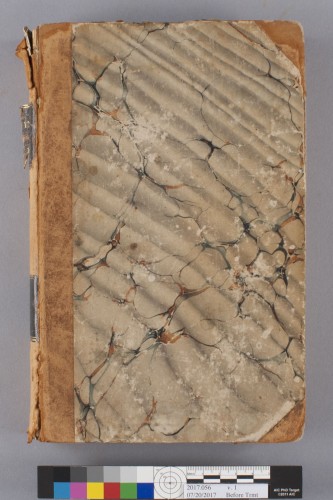
Volume One of The Novels of Jane Austen (1838), published in Philadelphia by Carey, Lea & Blanchard.
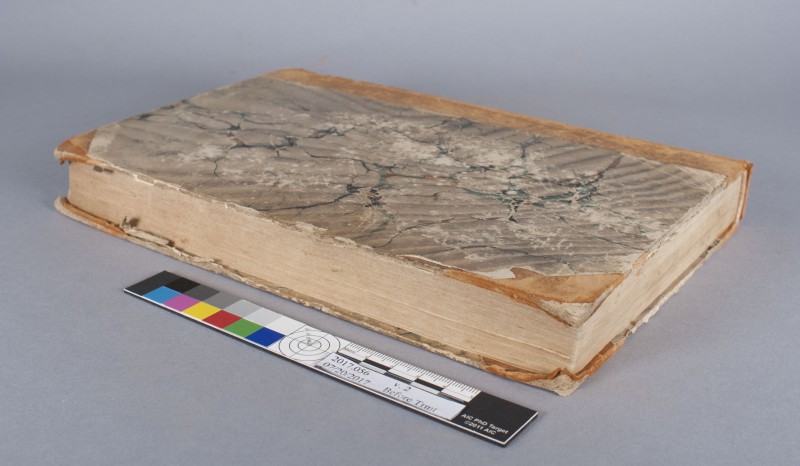
Volume Two of The Novels of Jane Austen (1838), published in Philadelphia by Carey, Lea & Blanchard.
After documenting the condition of the books and discussing a suitable treatment plan, I began by consolidating the cover. The leather was in a powdery and decayed state known as red rot. To help mitigate this, I judiciously applied a consolidant that would help seal the powdery surface and impart strength. Lifted spine labels and the paper cover were also adhered back into place.
Once the cover material was stabilized, the next step was to repair the broken outer joints. Strips of a heavy weight Japanese Kozo paper were adhered over and along the length of the joints using wheat starch paste. This type of paper is known to be archival and have long, strong and flexible fibers that produce a lasting repair. This paper was also used to rebuild the missing endcaps. It is very common for endcaps to become damaged since readers often pull books from their headcap. This can be prevented by pulling the book from the center of the spine instead. A piece of cotton cord was used as a core in this construction, to help shape the cap and provide further protection. Kozo paper and wheat starch paste were also used to cover and protect the corners of the boards where leather was missing and the millboard was delaminating.
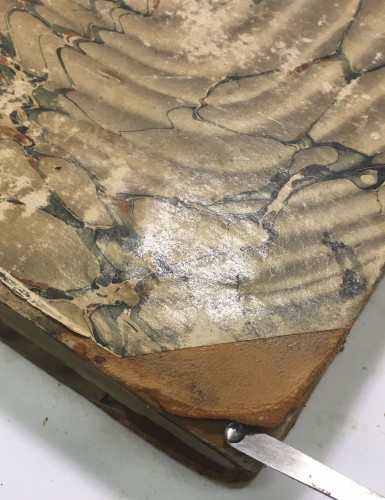
Consolidating leather at the board’s corners
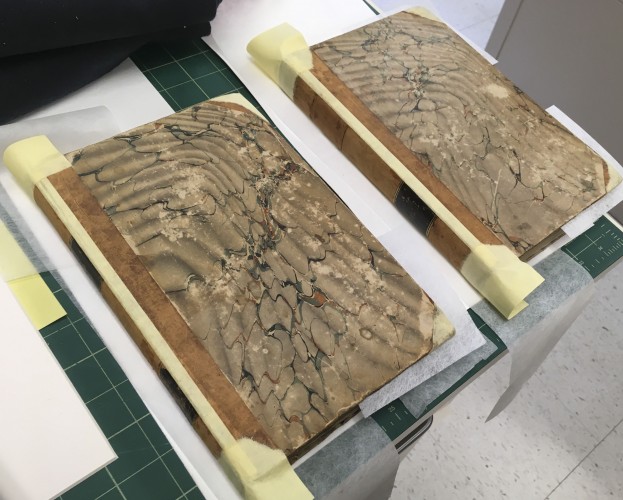
Application of yellow Kozo paper for joint and corner reinforcement and endcap repair.
At this point, the exteriors of the volumes were intact and strong, and so I proceeded with more confidence to treat the interior of the book. This primarily consisted of using a lightweight Kozo paper to secure loosened pages, mend tears, and fill losses.
The final steps involved integrating and strengthening the binding repairs. The Kozo was inpainted using lightfast acrylics, and then coated with a layer of an acrylic-wax emulsion to consolidate and provide a surface finish akin to leather. Now the books are conserved, and safe to handle and read!
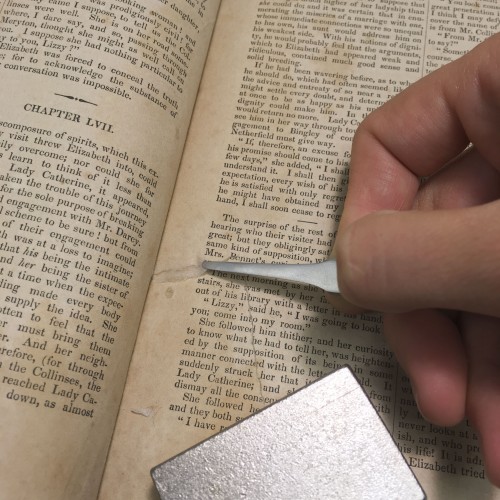
Mending tears in the textblock .
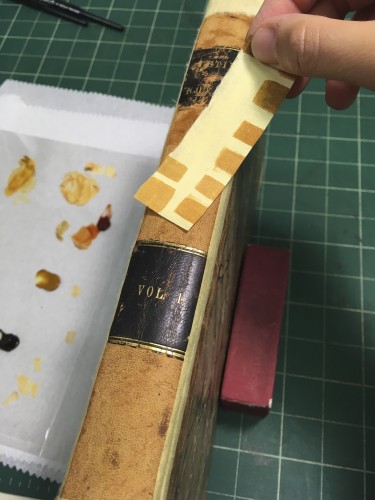
Mixing acrylic colors for inpainting repairs.
Throughout this project, I made sure to focus on repairing only those parts of the books that were most vulnerable to further damage, since our intention in the lab is to preserve as much of the book's original material and history as possible, all while improving its function and accessibility. Volume One is now on display in the Audubon Room as part of The Life and Times of Lizzy Bennet.
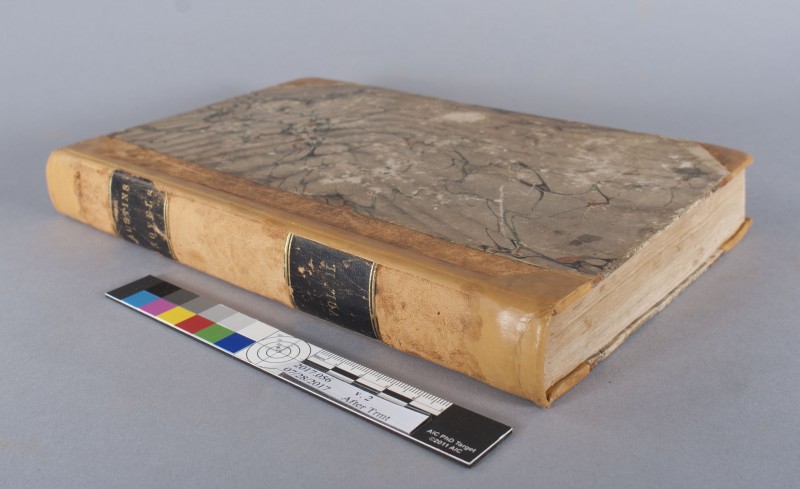
Volume two after treatment.
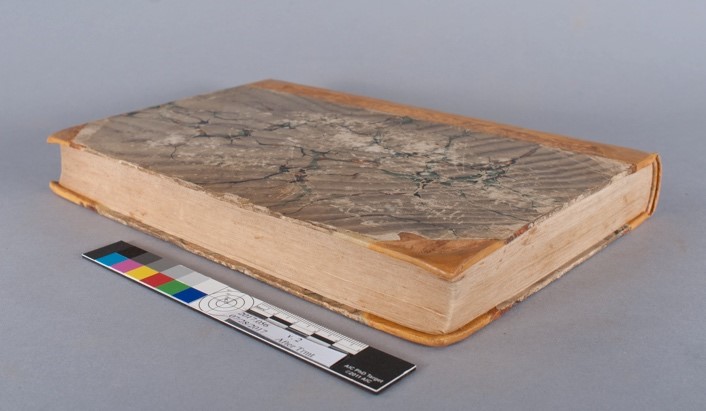
Volume two after treatment.